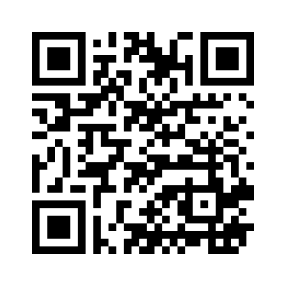Dreams have fascinated humanity for centuries. Indeed, whether it’s the vivid, surreal landscapes we experience during REM sleep or the lingering emotions that greet us upon waking, our dreams often feel profoundly meaningful. Early civilizations considered them messages from gods or portents of future events. However, while modern science has demystified much of the dreaming process, we still wonder: why do we dream, and how can these subconscious narratives improve our daily lives?
This is where the concept of “dreamwork” enters the conversation. Rooted in psychoanalysis and expanded through modern personal development approaches, dreamwork is the art and science of analyzing dreams for deeper self-awareness, emotional healing, and transformation. Moreover, in this article, we will explore the origins of dreamwork, its connection to the theories of Sigmund Freud and Carl Jung, and how anyone can harness dream analysis as a self-coaching tool for greater well-being.
The Origins of Dreamwork in Psychoanalysis
Freud’s Groundbreaking Approach
No discussion about dreamwork can begin without mentioning Sigmund Freud, often referred to as the father of psychoanalysis. In his seminal work, The Interpretation of Dreams (1899), Freud proposed that dreams represent the “royal road to the unconscious.” Specifically, he believed that, through the careful interpretation of dream symbols and themes, individuals could uncover repressed desires, fears, and conflicts from their subconscious mind.
Freud’s approach to dreamwork involved analyzing dream content on two levels:
- Manifest Content: The literal storyline, characters, and events that make up the dream.
- Latent Content: The hidden, symbolic meaning beneath the surface, which often reveals unconscious wishes or unresolved inner conflicts.
Consequently, Freud argued that by bringing the latent content to awareness, people could come to terms with their hidden emotions and experiences. As a result, this process is an essential step toward psychological healing and self-understanding.
Jung’s Expansive Vision
While Freud laid the groundwork, Carl Gustav Jung broadened the field of dream analysis by introducing new concepts such as the collective unconscious and archetypes. In contrast to Freud’s focus on individual subconscious content, Jung saw dreams not merely as windows into personal repressed material, but also as a tool to explore universal themes and mythic patterns common to all human beings.
In Jungian dreamwork, symbols in dreams are not only personal; they can also be archetypal figures—like the Mother, the Hero, or the Shadow—that point to profound collective human experiences. Therefore, by interpreting dreams through this lens, Jung proposed that individuals could tap into a deep well of wisdom, thereby fostering greater emotional and spiritual development.
Dreamwork and Personal Development
Today, dreamwork isn’t limited to the psychoanalyst’s couch. In fact, coaches, therapists, and even laypeople seeking deeper self-awareness are rediscovering the potential locked within their dream life. In the realm of personal development, dreams can serve as a mirror, reflecting both our conscious and unconscious thought patterns, desires, and obstacles.
Why Dreams Matter for Self-Growth
Emotional Processing: Dreams offer a safe space for the mind to process unresolved emotions, traumas, or anxieties. Thus, emotional processing through dreams can help reduce stress and enhance mental clarity in daily life.
Creative Insight: Many people wake up from a dream with a novel idea or fresh perspective. Indeed, dreams can act as incubators for creativity and problem-solving, giving you new ways to tackle personal or professional challenges.
Inner Guidance: By listening to the symbols and narratives that arise in your dreams, you can discover hidden parts of yourself—talents, fears, desires, and motivations—that might be overlooked in waking life. Hence, exploring these dream elements can significantly boost self-awareness.
The Shift to Self-Coaching
The modern personal development landscape emphasizes self-empowerment, suggesting that individuals can be their own coaches in many respects. While professional help is certainly valuable, self-coaching through dreamwork can be a powerful complementary practice. By analyzing your dreams regularly, you cultivate self-awareness, track psychological patterns, and develop a more intuitive sense of your internal landscape. Consequently, this practice can accelerate your personal development and well-being.
Practical Steps for Effective Dreamwork
Start a Dream Journal
To engage in dreamwork, the first and most crucial step is to remember your dreams. Unfortunately, this is easier said than done for those who rarely recall their nighttime visions. Nevertheless, a dream journal can be a game-changer.
- Keep a Notebook by Your Bed: The moment you wake up, jot down any images, emotions, or fragments you remember. Even a single word or feeling can spark deeper exploration.
- Use Voice Notes: If writing seems cumbersome first thing in the morning, consider using a voice recorder or a smartphone app to capture your dreams verbally.
- Consistency is Key: The more consistently you track your dreams, the more you’ll remember. Eventually, you’ll notice patterns, recurring symbols, or themes worth exploring further.
Identify Key Symbols and Emotions
Once you’ve recorded your dreams, look for common symbols—animals, objects, colors, settings—and note the emotions you experienced. For instance, did you feel fear, excitement, longing, or frustration? Sometimes a symbol’s significance is deeply personal, linked to your own memories or current life context. Other times, it might connect to broader archetypal patterns.
- Freud’s Perspective: Pay attention to symbols that may represent hidden wishes, unresolved conflicts, or childhood experiences.
- Jung’s Perspective: Notice if these symbols evoke mythic or archetypal qualities that transcend your personal biography. Indeed, these can point to universal human themes.
Engage in Active Imagination
Jung introduced a powerful practice called active imagination, where you consciously dialogue with dream figures or symbols. For example, if you dream about a mysterious guide or a daunting monster, try visualizing yourself interacting with these dream characters in a waking state. Moreover, ask them questions, seek clarity, and allow your imagination to respond spontaneously. This way, you can gather valuable insights into your psyche while integrating these symbols’ messages into everyday life.
Look for Patterns in Your Waking Life
Dreamwork doesn’t end with morning journaling. Instead, its true value emerges when you connect dream insights to your daily experiences and behaviors. Are you repeatedly dreaming about being late to an event? Perhaps you’re feeling pressure at work or fear of missing opportunities in your personal life. Do certain landscapes recur—like being lost in a maze or returning to your childhood home? If so, examine what these dream scenes might symbolize about your current challenges or emotional states.
By consistently bridging the gap between dream content and real-life behavior, you create a feedback loop of self-awareness that accelerates your personal development journey.
How Dreamwork Serves as a Self-Coaching Tool
Goal Setting and Emotional Release
When you start treating your dream analysis as a coaching exercise, you can set specific goals:
- Identify limiting beliefs that surface in your dreams.
- Explore unresolved emotions and actively work on releasing them.
- Use dream insights to clarify your objectives in work, relationships, or personal pursuits.
Consequently, this structured approach to dreamwork can amplify the impact of your self-improvement efforts, guiding you toward healthier emotional states and clearer personal goals.
Building Confidence and Resilience
Dreams often confront us with scenarios that test our emotions—fearful chases, daunting obstacles, or feelings of inadequacy. Therefore, by consciously reflecting on these themes, you build resilience. Recognizing your capacity to handle challenging emotions or symbolic threats in a dream state can instill greater confidence in your waking life. As a result, you may find yourself more capable of dealing with day-to-day stressors.
Strengthening Intuition
One of the greatest benefits of dreamwork is its power to sharpen your intuition. Occasionally, dreams offer gut feelings or warnings about situations we might otherwise overlook. Hence, as you develop a more meaningful relationship with your inner world, you’ll likely notice a heightened sense of intuitive clarity. Ultimately, this sharpened intuition can guide you to make better decisions in your personal and professional life.
Common Pitfalls and How to Overcome Them
- Overthinking Symbolism: While dream symbols can be profound, avoid getting lost in endless interpretation. Sometimes, a dream is simply reflecting daily stressors or random subconscious processes.
- Ignoring Emotional Clues: It’s easy to focus on the intellectual puzzle of your dream and neglect the emotional messages. Yet, emotions in dreams often carry the most significant insights.
- Expecting Instant Transformation: Dreamwork is a process. Consequently, consistent practice fosters deeper self-awareness and gradual, meaningful change. Be patient with yourself as you learn.
Integrating Dreamwork into Your Daily Routine
To make dreamwork a sustainable habit, consider weaving it into your daily or weekly activities:
- Morning Ritual: Spend a few minutes each morning documenting your dreams and reflecting on any initial insights. Furthermore, try to observe if these insights can offer guidance for the day ahead.
- Evening Reflection: Before bed, set a clear intention to remember and learn from your dreams. For instance, write a simple affirmation like, “I will recall my dream and find guidance within it.”
- Periodic Review: At the end of each week or month, review your dream journal entries. Subsequently, note any recurring themes, symbols, or emotional patterns. Eventually, this regular review helps highlight your growth areas and aspects that need more attention.
Conclusion
Dreamwork stands at the crossroads of psychoanalysis and personal development, offering a profound yet accessible pathway to self-discovery and emotional well-being. From Freud’s groundbreaking focus on repressed desires to Jung’s exploration of the collective unconscious, the tradition of dream analysis has evolved into a versatile tool for the modern seeker. Nowadays, it’s not just for psychotherapists—anyone can harness the wisdom of dreams to catalyze personal growth, enhance self-coaching, and foster deeper insights into the unconscious mind.
If you’re intrigued by the idea of tapping into your dream life for self-improvement, start small. Keep a dream journal, familiarize yourself with symbolic interpretations, and consistently bridge what you learn in your dreams with your waking experiences. Over time, you’ll discover that the nightly messages of your subconscious can guide you toward greater self-awareness, creativity, and emotional resilience. In a world that often values external metrics of success, dreamwork invites you to journey inward, revealing a landscape rich with meaning, potential, and transformative power.






